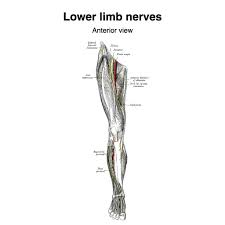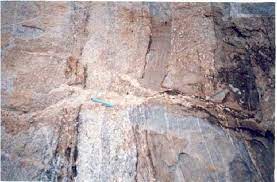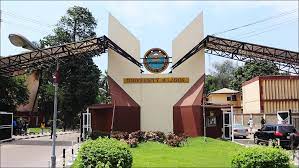
Nerves are an essential component of the human body, responsible for carrying electrical signals to and from the brain, allowing the body to function properly. In the lower limb, nerves play a critical role in our ability to move, feel sensations, and maintain balance. The nerves in the lower limb are responsible for carrying signals to and from the muscles, skin, and bones, allowing us to walk, run, jump, and perform a wide range of physical activities.
This article will provide an overview of the nerves in the lower limb, their importance in our daily lives, and common conditions and injuries that can affect them. By understanding the anatomy and function of these vital nerves, we can better appreciate the intricacies of our bodies and take steps to protect them from harm.
The lower limb nerves play a significant role in controlling the movement and sensation of the lower extremities, and any damage to them can have severe consequences on a person's ability to walk and perform daily activities. Lower limb nerves can be categorized into the sciatic nerve, tibial nerve, and peroneal nerve.
The sciatic nerve, the largest nerve in the human body, is formed by the union of the ventral rami of L4-S3 spinal nerves. It provides motor innervation to the hamstring and adductor muscles. The tibial nerve, a branch of the sciatic nerve, controls the movement and sensation of the posterior compartment of the leg and the sole of the foot. Finally, the peroneal nerve controls movement and sensation of the anterior muscles of the leg and dorsum of the foot.
The lower limb nerves are responsible for various motor and sensory functions that enable lower limb movement. These functions include muscle movement, sensation, balance, and coordination. The nerves are classified based on their origin and distribution, with each nerve serving specific muscles and areas of the lower limbs. The sciatic nerve is the largest nerve in the lower limb, responsible for supplying the hamstrings, calves, and glutes.
Other nerves, such as the femoral nerve and tibial nerve, play significant roles in general motor function of the lower limb and sensation. Proper nerve function is essential for maintaining balance and coordination, as well as for performing everyday activities like walking, running, and jumping. Nerve conduction velocity is a measure of how quickly nerve impulses travel along a nerve, affecting overall nerve function.
Lower limb nerve injuries are a common occurrence, often caused by trauma, repetitive motion, or medical conditions such as diabetes or infections. These injuries can cause a wide range of symptoms, including numbness, weakness, and pain in the affected limb. The severity of the injury and the specific nerve affected will determine the course of treatment. Nerve injuries can be classified into three categories: minor, moderate, and severe. Minor injuries typically heal on their own, while moderate injuries require physical therapy or other treatments such as medication. Severe injuries may require surgical intervention, including nerve grafts and transfers. Common lower limb nerve injuries include sciatic nerve injuries: radiating pain at the back of the leg
peroneal nerve injuries: numbness on the dorsal portion of the foot, foot drop, slapping foot gait change.
tibial nerve injuries: numbness and weakness at the back of the knee and foot
Early diagnosis and prompt treatment are key to preventing permanent damage or disability.
Diagnosis of nerve injuries typically involves a combination of clinical examination, electromyography (EMG) and Nerve Conduction Velocity (NCV) tests, as well as MRI (Magnetic Resonance Imaging) and CT (Computed Tomography) scans. Clinical examination may reveal symptoms such as muscle weakness, numbness, tingling, and pain. EMG and NCV tests are used to evaluate the function of nerves and muscles. During an EMG test, a small needle is inserted into muscle tissue to measure electrical activity, while NCV measures the speed at which electrical signals travel along the nerve. MRI and CT scans can provide detailed images of the affected area, allowing for a better understanding of the extent and location of damage. Accurate diagnosis is important to guide appropriate treatment and improve outcomes for nerve injuries.
The management of nerve injuries involves a wide range of treatments aimed at restoring nerve function and reducing pain. Conservative management involves observation and waiting for the nerve to heal on its own. Non-surgical interventions like pain medications, splints, and physical therapy are also used to manage symptoms. Surgical management is often necessary in severe cases such as complete nerve severance or compression due to scar tissue. This may involve primary nerve repair, nerve grafting, or nerve transfer surgery.
After surgical intervention, a period of rehabilitation and physiotherapy is critical to prevent muscle wasting and optimize functional recovery. This may include exercises to maintain or improve range of motion, strength, and dexterity, modalities for pain control, and training for activities of daily living. The management of nerve injuries requires a multidisciplinary approach to achieve optimal outcomes.
Management of lower limb nerve injuries can be divided into three main categories: conservative, surgical, and rehabilitation/physiotherapy. Conservative management may be appropriate for less severe injuries or for patients who cannot undergo surgery due to other health conditions.
This may involve immobilization of the affected area, pain management, and physical therapy exercises to maintain strength and range of motion. Surgical management, on the other hand, may be necessary for more severe injuries, such as nerve lacerations or avulsions. This may involve nerve repair or transfer procedures to restore function.
After surgery, rehabilitation and physiotherapy are crucial to promote nerve regeneration, strengthen muscles, and improve overall functional outcomes. This may include exercises, stretching, and other modalities such as electrical stimulation and manual therapy. Overall, a multidisciplinary approach is necessary for effective management of lower limb nerve injuries.
In conclusion, the nerves of the lower limb play a crucial role in the proper functioning of the leg. Damage or injury to these nerves can lead to varying degrees of sensory and motor loss, which can greatly affect a person's quality of life.
It is of utmost importance to take care of the nerves in the lower limb, and various preventive measures can be employed to ensure their health and well-being. While there have been vast advancements in the field of nerve injury treatment, there is still a need for further research and development in this area.
The hope is that with continued efforts, there will be new and innovative treatments that will effectively restore the damaged nerves and improve the lives of those affected by nerve injuries.






















